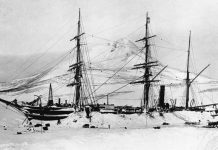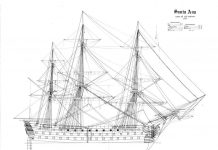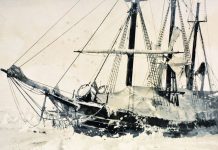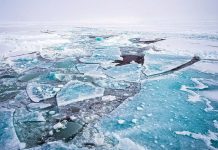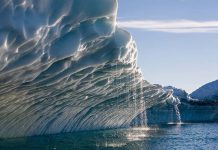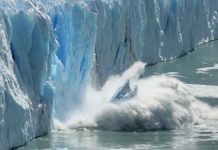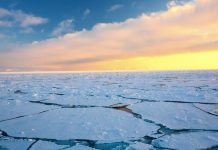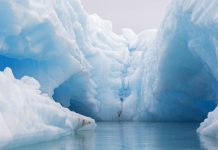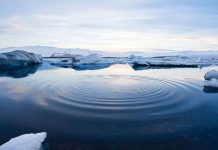Fridtjof Nansen was born on October 10, 1861 near Christiania (now Oslo) in the manor of Sture-Freen. His father Baldur Nansen was a successful lawyer, and his mother came from the family of the counts of Wedel-Jarlsberg. Even in his youth, Fridtjof became famous as an excellent speed skater and skier, he repeatedly won the Norwegian championships. Despite his passion for painting, after graduating from high school, he still chose science and entered the university at the Department of zoology.
In 1882, as a biological practice, Fridtjof went on a four-month voyage across the Arctic Ocean on the St. John’s wort ship Viking. This voyage had a very big impact on the 20-year-old Nansen, he fell in love with the North, its harsh nature, boundless spaces covered with ice. It can be said that it was during this voyage that the future outstanding polar explorer was born.
In 1883-1887, Nansen was engaged in science.
Even while sailing on the Viking, Nansen had a desire to cross Greenland on skis, in 1887 he decided that the time had come to implement it. Fridtjof specially goes to Stockholm to consult with Nordenskiold, a famous Swedish polar explorer who carried out two expeditions to Greenland.
Nansen outlined to Nordenskiold his plan for crossing Greenland on skis. Although the elderly scientist was rather skeptical about this plan, he clearly liked Nansen and promised to help him with advice. Inspired by Nordenskiold’s benevolent attitude, Nansen, through the Academy of Sciences, petitioned the government to grant him 5,000 crowns for the expedition.
The young scientist’s plan was not approved in the press. Nansen’s intention to begin crossing the entire ice plateau of Greenland from the eastern shore, and not from the inhabited western one, caused particular bewilderment, and even indignation. It turned out that Nansen was depriving himself and his companions of escape routes. One of the newspapers wrote: “It would be a crime to support a suicide.” The government was not going to do it: the project was rejected and funds were denied.
However, there were also those who believed Nansen, the Danish merchant A. Hamel donated the necessary 5,000 crowns for the expedition. Nansen carefully prepared for his first expedition, in the winter of 1888 he personally checked all the equipment in the surrounding mountains. He said: “I always foresaw at least five times more than was actually realized. The secret of a leader is to take into account all possible possibilities; nothing should come as a surprise.”
It should be noted that later Roald Amundsen did the same.
In addition to Nansen, the expedition included five other participants, all experienced skiers, physically hardy and familiar with the Arctic people. They set off on May 5, 1888, and on July 17 landed on floating ice, 20 km from the coast. With great difficulty, they managed to get to the land south of Umivik Fjord, and the expedition started from there.
We went skiing, each participant had more than one kg of cargo, the frost reached -40 ° C. There were very few fats in the diet, woolen clothes did not save from the cold, but the skiers stubbornly went forward, because they had nowhere to retreat. They traveled about 66 km through the Greenland ice and reached the west coast on October 3, 1888. This was the first crossing of Greenland, during which valuable scientific materials were collected, meteorological observations were carried out.
Due to the fact that the participants were late for the last steamer, they returned to Norway only in 1889. They were greeted as national heroes. Nansen became famous, his opinion was now listened to; already being a university professor, in 1890 and 1891 he wrote two books about the Greenland expedition — “Skiing through Greenland” and “The Life of the Eskimos”.
Various objects belonging to the unsuccessful American expedition of George De Long on the ship Jeanette, which crashed in 1881 to the northeast, were discovered. Nansen was not going to rest on his laurels, the Arctic attracted him again. Having finished processing the results of the Greenland expedition, he conceived an even more risky and rather unusual expedition to the North Pole. He believed that there was a strong east-west current running from Siberia to the North Pole and further Greenland. Its reality was confirmed from the Novosibirsk Islands. The Norwegian meteorologist, Professor G. Mon, also wrote about this current in 1884.
According to Nansen’s plan, it was necessary to sail on a specially built sturdy ship to the Novosibirsk Islands, where the ship would freeze into the ice. Then all the work had to be done by the current, the ship would drift along with the ice to the North Pole and the straits between Svalbard and Greenland.
The crew could only wait until the ship was carried out to clear water.
After Greenland, Nansen’s new plan was already treated with enthusiasm, it was supported by the Norwegian Parliament, which allocated subsidies in 1890 and 1893 for the construction of a vessel of 250 thousand crowns. A prerequisite for receiving funds was a purely Norwegian national composition of the expedition. Norway was part of Sweden from 1814 to 1905, which is why the national question was so worried about parliamentarians. The remaining part of the necessary funds was raised through national subscription, private donations and subsidies from various investors. For example, the expedition was sponsored by the Cadbury chocolate company, which also supplied the expedition with its own chocolate. It should be noted that our compatriot Baron Eduard Toll also helped this expedition, who organized evacuation bases on the Novosibirsk Islands in case of shipwreck and handed over 35 West Siberian sled dogs to Nansen.
While the construction of the expedition vessel, called the “Fram”, was underway, Nansen’s plan continued to be hotly discussed all over the world. Well-known polar explorers F. McClintock, J. Nares, J. Hooker reacted to him very skeptically, believing that the Norwegian vessel would certainly be crushed by ice. However, there were those who supported Nansen, among them — the British polar explorers K. Markham and E. Ingle-field, the famous German geographer A. Zuian.
When the Fram was built, many experts gave it a very high rating. The strong hull of the vessel was made in such a way that when compressed by ice, the ship did not break, but squeezed out to the surface, so Nansen was completely confident in its reliability. More than six hundred people applied to participate in the expedition, so Fritjof had a great opportunity to choose a reliable ship and a reliable team for his ship. In the end, including Nansen, 13 people went on the expedition.
On June 24, 1893, the expedition set off, having on board the ship food for five years and a significant supply of fuel. Without incident, the Fram reached along the northern coast of Siberia to the area of the Novosibirsk Islands. Before reaching them about a hundred miles, the ship turned to the north And on September 22, HAVING REACHED 79 ° C. III., the Fram was firmly frozen into the ice. The drift to the west, to Greenland, began.
Nansen’s plans included the conquest of the North Pole, but the drift of the Fram was not as close to the pole as he had assumed.
Nevertheless, Nansen decided to try to reach the pole, he took with him the strongest and most enduring member of the expedition, Hjalmar Johansen, and on March 14, 1895, they left the ship, which was located at north latitude 84 ° 05′ and east longitude 101035’*
The way to the pole turned out to be very difficult, every now and then the way was blocked by ice hummocks or open water areas. Having moved closer to the pole than all their predecessors (86°14’s), they made a courageous decision to turn back and headed for Franz Josef Land.
Only three months later they managed to reach Franz Josef Land, where they built a kind of dugout out of stones and walrus skins and began their wintering, which lasted from September 28, 1895 to May 19, 1896. It should be noted that the polar Robinsons prepared for wintering very thoroughly, stocked up on meat, and with a minimum of food taken with them, they quite safely endured this difficult period.
In the summer of 1896, they were unexpectedly lucky: they met with the British Jackson expedition, on whose ship they returned to Varda on August 13, having stayed in the Arctic for three years. Amazingly, a week later, Fram returned to Norway!
The vessel drifted safely according to the planned scheme, confirming the existence of the current assumed by the scientist. The most valuable materials on currents, winds and temperatures were obtained, and the absence of land plots in the drift area was proved.
Nansen’s careful preparation of this expedition led not only to brilliant scientific results, for three years there were no patients in the ice on the “Frame”, and many participants even claimed that at that time they lived and ate better than at home. Nansen published not only a number of scientific papers about this expedition, but also a popular two-volume description of it, in the Soviet period it was published under the name “Fram” in the Polar Sea.”
A man with a big heart
After the legendary voyage on the “Frame” Nansen in 1900 participated in an expedition to study currents in the Arctic Ocean. He dreamed of an expedition to the South Pole and even began preparing for it, but he engaged in public activities, and lost new achievements in the polar latitudes to his talented successor, Roald Amundsen. Back in 1889, Fritjof married Eva Sara, one of the best opera singers in Norway. Nansen had five children, alas, at the end of 1907 he suffered a great grief — the death of his wife and younger son.
In history, Fridtjof Nansen has remained in history not only as a famous polar traveler, but also as a man with a very big heart.
He saved the starving of the Volga region, helped refugees and prisoners of war, donated large sums in favor of disadvantaged people. For his work in this field, he was awarded the Nobel Peace Prize in 1922. On May 13, 1930, Nansen died at his estate in Lusaker near Oslo. According to his will, after cremation, his ashes were scattered over the Oslo Fjord.



















